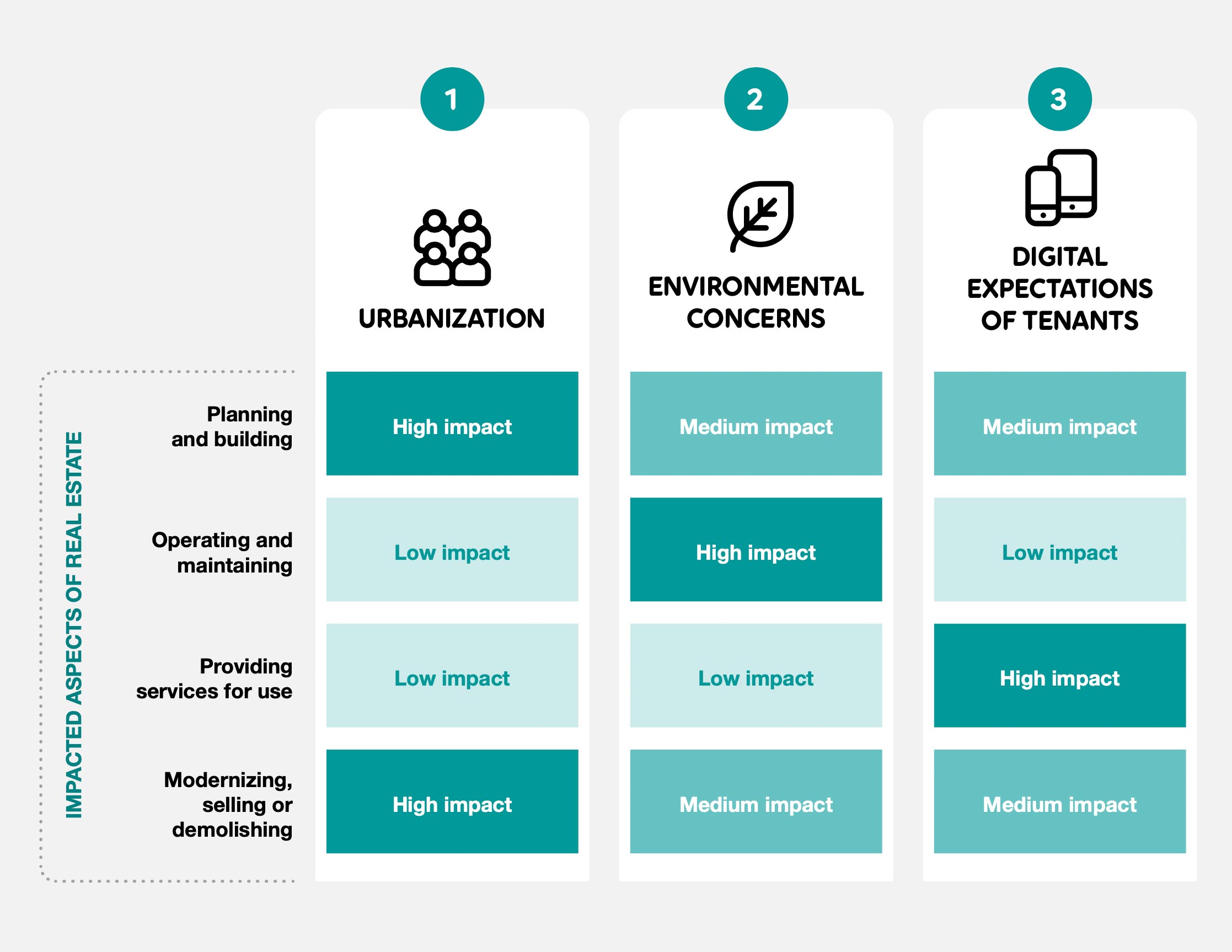Macro trends impacting the real-estate industry
Facility owners are at the center of multiple trends impacting the industry. While the industry has grown conservatively as a result of its favorable long-term conditions, an effective response to the new trends calls for new ways of working in all phases of a building’s lifecycle.
This is an extract from: Digitalization of Public Transport in the Nordics & Baltics. You can download the full report here
Urbanization
The long-standing trend of urbanization continues to impact the facility owners’ core assets –the buildings themselves. The densification of urban areas means that the space available needs to be used more effectively. Meanwhile in non-urban areas the trend is the opposite – with a shrinking population the need for housing and office space declines as well. Facilities then remain unused, are sold off at a discount or demolished, not least if renovations or updates have been deprioritized. Facility owners need to prioritize wisely, but also build up their data intelligence in order to monitor supply and demand development. Companies like Airbnb, the world’s biggest accommodation-sharingsite, and WeWork, providing shared workspaces, have pioneered new ways to match the market.
Sustainability
As 39 percent of the world’s CO2 emissions and 36 percent of energy consumption is related to buildings, the industry is also made aware of its role in reaching sustainable environmental targets. Pressure on facility owners is increasing from regulators implementing new policies on the one hand, and from end users seeking to lower their environmental footprint on the other hand. As lower energy consumption also leads to lower costs, environmentally and economically sustainable solutions for operating buildings go hand-in-hand.
Digtial expectations
Facility owners are increasingly obliged to adapt their provided services to the evolving digital expectations of tenants. The Digital native disruptors such as Airbnb and WeWork reinforce this trend, as do the digital services tenants use in other areas of their daily lives. As tenants get accustomed to user-friendly digital solutions for managing, renting and leasing facilities, traditional facility owners need to adapt. As a knock-on effect, with more frequent rentals and more home delivery services and home care, easier facility access is needed. This poses yet another challenge – easier access increases the risk of unauthorized entry. Facility owners must find a balance.

Cookie notification
Cookies allow us to optimize your use of our website. We also use third-parties cookies for advertising and analytics. Please read our Cookie Policy for more information.

